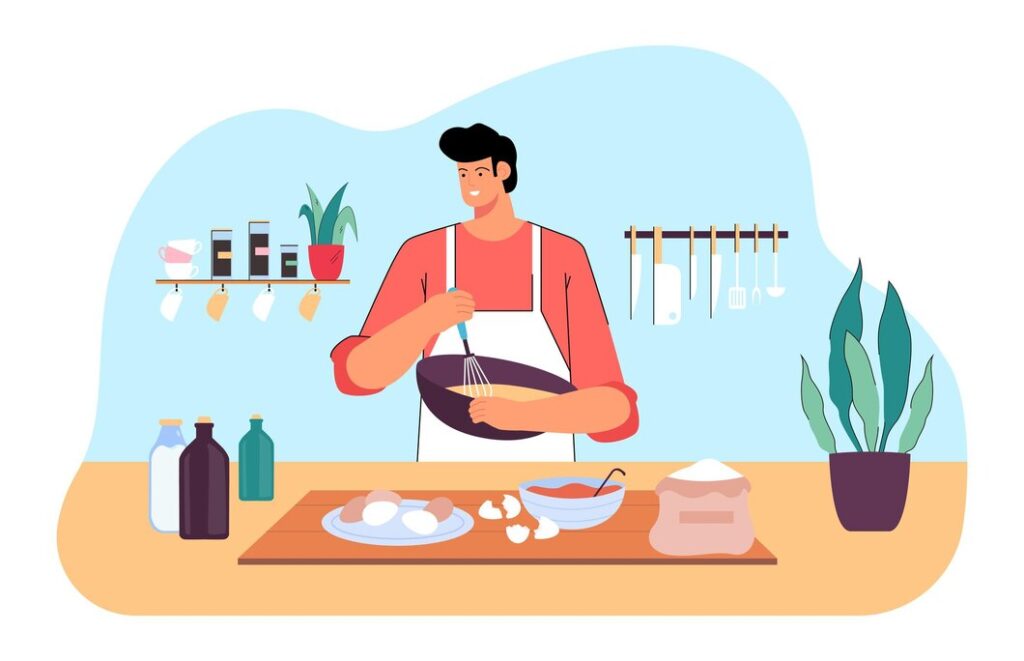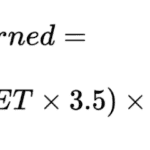Glycemic Index Calculator: How Food Affects Blood Sugar
The glycemic index (GI) is a valuable tool for understanding how different foods affect blood sugar levels. It measures how quickly carbohydrates in food are broken down into glucose, impacting blood sugar. Foods with a high GI are rapidly digested and absorbed, causing a more immediate spike in blood sugar levels, whereas low-GI foods are digested more slowly, leading to a gradual rise in blood sugar and insulin levels.
Glycemic Index Calculator

What Is the Glycemic Index?
The Glycemic Index (GI) measures how quickly a food raises blood sugar on a scale of 0 to 100:
✔ Low GI (0-55) – Slow digestion, steady energy (e.g., lentils, oats, nuts).
✔ Medium GI (56-69) – Moderate blood sugar rise (e.g., brown rice, whole wheat bread).
✔ High GI (70-100) – Rapid spike, quick energy crash (e.g., white bread, sugar).
But here’s the catch: GI isn’t everything. The way you eat a food—what you pair it with, how it’s cooked, and even how ripe it is—can change its effect on your blood sugar.Have you ever wondered why some foods keep you energized for hours while others leave you hungry again in no time? The secret lies in their Glycemic Index (GI).
The Glycemic Index ranks carbohydrates based on how quickly they raise blood sugar levels. Understanding GI can be a game-changer—not just for diabetics, but for weight loss, energy levels, and long-term health.
📢 Surprising fact: Not all “healthy” foods are low-GI! Watermelon has a higher GI than ice cream. But does that mean it’s bad for you? Let’s dive in and find out.

Find Low-GI Meals Instantly with Recipians!
What if your next craving actually helped your energy, mood, and health? With Recipians, explore low-GI meals that taste like indulgence but act like wellness. Your blood sugar doesn’t have to spike to feel satisfied.
Glycemic Index vs. Glycemic Load
While GI tells us how fast a food raises blood sugar, it doesn’t consider portion sizes. That’s where Glycemic Load (GL) comes in. At first glance, Glycemic Index (GI) and Glycemic Load (GL) may seem interchangeable—but they measure two very different things, and understanding both is key to managing blood sugar and making smarter food choices.
The Glycemic Index is a scale from 0 to 100 that measures how quickly a carbohydrate-containing food raises blood glucose levels. Foods are ranked as low (GI ≤ 55), medium (GI 56–69), or high (GI ≥ 70). However, GI doesn’t consider how much carbohydrate is actually in a serving. This is where people often get misled. For example, watermelon has a high GI of around 72, but a typical serving contains so little carbohydrate that its overall impact on blood sugar is minimal.
That’s where Glycemic Load comes in. GL considers both the quality (GI) and quantity (grams of carbs per serving) to give a more accurate picture of a food’s effect on blood sugar. The formula is simple:
GL = (GI × Net Carbohydrate per Serving in grams) ÷ 100
Here’s a table comparing GI and GL values of some common foods:
| Food | GI | Carbs/Serving (g) | GL | Category |
|---|---|---|---|---|
| Watermelon | 72 | 6 | 4 | Low GL |
| Apple | 36 | 15 | 5 | Low GL |
| Brown Rice | 68 | 25 | 17 | Moderate GL |
| White Bread | 75 | 30 | 23 | High GL |
| Baked Potato | 85 | 33 | 28 | High GL |
| Milk (Whole) | 39 | 12 | 5 | Low GL |
| Pasta (Al Dente) | 45 | 30 | 13 | Moderate GL |
| Egg | 0 | 0 | 0 | No GL (no carbs) |
As you can see, two foods can have a similar GI but wildly different GL. This is especially important when choosing fruits, grains, or even vegetables. GI gives a good indication of how fast a food spikes your blood sugar, but GL tells you how big that spike actually is based on a realistic portion.

Low Glycemic Index Foods List PDF
Eating low glycemic index (GI) foods isn’t about giving up your favorite meals—it’s about making smart swaps that help you feel fuller longer, avoid energy crashes, and keep your blood sugar steady. Low GI foods are digested and absorbed slowly, resulting in a gradual rise in blood sugar and insulin levels. This not only helps manage diabetes and weight but also supports better energy levels, focus, and long-term heart health.
So, what makes a food low GI? Typically, foods with a GI score of 55 or below fall into this category. These are often rich in fiber, protein, or healthy fats, and less processed. Think steel-cut oats instead of sugary cereals, brown lentils over white rice, or whole apples instead of juice.
Common Low-GI Foods by Category
| Category | Examples of Low GI Foods (GI ≤ 55) |
|---|---|
| Grains & Cereals | Barley, Steel-cut oats, Rolled oats, Quinoa, Bulgur, Whole wheat pasta, Buckwheat, Brown rice (some types) |
| Legumes | Lentils, Chickpeas, Kidney beans, Black beans, Navy beans, Soybeans, Peas |
| Vegetables | Broccoli, Cauliflower, Zucchini, Spinach, Carrots (raw), Eggplant, Kale, Tomatoes, Lettuce |
| Fruits | Cherries, Apples, Oranges, Plums, Grapefruit, Strawberries, Pears, Peaches, Kiwi, Apricots |
| Dairy & Alternatives | Milk (skim/whole), Yogurt (plain), Soy milk (unsweetened), Almond milk (unsweetened) |
| Nuts & Seeds | Almonds, Walnuts, Cashews, Flaxseeds, Chia seeds, Pumpkin seeds |
| Breads | Sourdough bread, 100% whole grain bread (dense), Pumpernickel bread |
| Snacks & Others | Hummus, Dark chocolate (≥70%), Popcorn (air-popped, unsalted), Tomato juice, Vinegar-based dressings |
🌾 Grains & Cereals (Low GI Rice)
| Food | GI Value |
|---|---|
| Barley (pearled) | 25 |
| Steel-cut oats | 42 |
| Rolled oats | 55 |
| Quinoa | 53 |
| Bulgur | 46 |
| Buckwheat | 49 |
| Brown rice (Basmati) | 50 |
| Whole wheat pasta | 42 |
| Spaghetti (al dente) | 42 |
| Wild rice | 45 |
🥦 Low GI Vegetables
| Food | GI Value |
|---|---|
| Raw carrots | 16 |
| Broccoli | 10 |
| Spinach | 6 |
| Cauliflower | 10 |
| Zucchini | 15 |
| Eggplant | 15 |
| Bell peppers | 10 |
| Cabbage | 10 |
| Kale | 2 |
| Tomatoes | 15 |
🍎 Low GI Fruits
| Food | GI Value |
|---|---|
| Cherries | 22 |
| Grapefruit | 25 |
| Apples | 36 |
| Oranges | 40 |
| Pears | 38 |
| Peaches | 42 |
| Plums | 40 |
| Kiwi | 52 |
| Strawberries | 41 |
| Apricots (fresh) | 34 |
🫘 Low GI Legumes
| Food | GI Value |
|---|---|
| Lentils (boiled) | 32 |
| Chickpeas | 28 |
| Kidney beans | 24 |
| Black beans | 30 |
| Navy beans | 31 |
| Pinto beans | 39 |
| Soybeans | 15 |
| Green peas | 22 |
| Mung beans | 25 |
| Adzuki beans | 35 |
🥛 Low GI Milk : Dairy & Alternatives
| Food | GI Value |
|---|---|
| Milk (whole) | 39 |
| Milk (skim) | 37 |
| Yogurt (plain) | 36 |
| Greek yogurt (unsweet.) | 11–20 |
| Soy milk (unsweet.) | 34 |
| Almond milk (unsweet.) | 25 |
| Buttermilk | 38 |
| Cottage cheese | 27 |
| Ricotta cheese | 27 |
| Kefir (plain) | 36 |
🥜 Low GI Nuts & Seeds
| Food | GI Value |
|---|---|
| Almonds | 0–15 |
| Walnuts | 15 |
| Peanuts | 13 |
| Cashews | 22 |
| Pistachios | 15 |
| Flaxseeds | 0 |
| Chia seeds | 1 |
| Sunflower seeds | 35 |
| Pumpkin seeds | 33 |
| Sesame seeds | 35 |
How Long Does Sugar Stay In Your System
You’ve had a sweet snack, maybe a donut or a soda. Now you’re wondering—how long is this sugar going to hang around in my body? It’s a common and important question, especially for those managing diabetes, insulin resistance, or just trying to balance energy and mood. You can use our Sugar Calculator to find sugar content in food and Sugar Consumption Limits
The answer isn’t one-size-fits-all—it depends on what type of sugar you consumed, your metabolism, activity level, and overall health.
🕒 Average Sugar Absorption Timeline
| Time After Eating Sugar | What Happens in Your Body |
|---|---|
| 0–15 minutes | Simple sugars (glucose, fructose) are rapidly absorbed into the bloodstream. |
| 30–60 minutes | Blood sugar levels peak. The pancreas releases insulin to transport glucose into cells. |
| 2–3 hours | Blood sugar begins to return to baseline, especially if you’re active or insulin-sensitive. |
| 4–5 hours | In most healthy individuals, sugar from a meal is fully processed. |
🍩 Simple vs. Complex Carbs
- Simple sugars (from candy, soda, pastries): Digested in minutes. You’ll see a quick spike in blood glucose, followed by a sharp drop.
- Complex carbs (whole grains, legumes): Take longer to break down, resulting in slower sugar release into your bloodstream.
So while sugar from a candy bar might enter your system within 10 minutes and peak in 30–45, complex carbohydrates could take 1–3 hours to fully release their glucose.
⚖️ What Affects How Long Sugar Stays in Your System?
- Insulin Sensitivity: The more sensitive your body is to insulin, the faster sugar clears.
- Physical Activity: Exercising after eating helps muscles absorb glucose quickly.
- Meal Composition: Pairing sugar with fat or protein slows absorption.
- Health Conditions: In people with diabetes, sugar can remain elevated for hours if insulin isn’t effectively regulating it.
Frequently Asked Questions About the Glycemic Index
Conclusion
The glycemic index is a powerful tool for managing blood sugar levels and promoting overall health. By understanding the GI and incorporating low-GI foods into your diet, you can improve satiety, manage weight, and reduce the risk of chronic diseases. Using tools like the Glycemic Index Calculator can further enhance your ability to make informed dietary choices, leading to better health outcomes.
For more information on the glycemic index and related health topics, visit the following resources:





